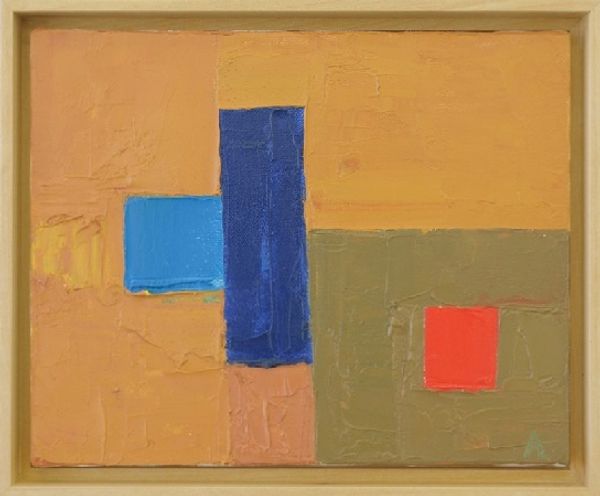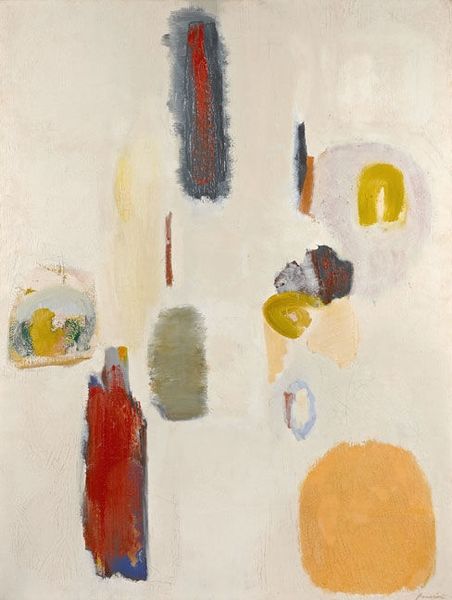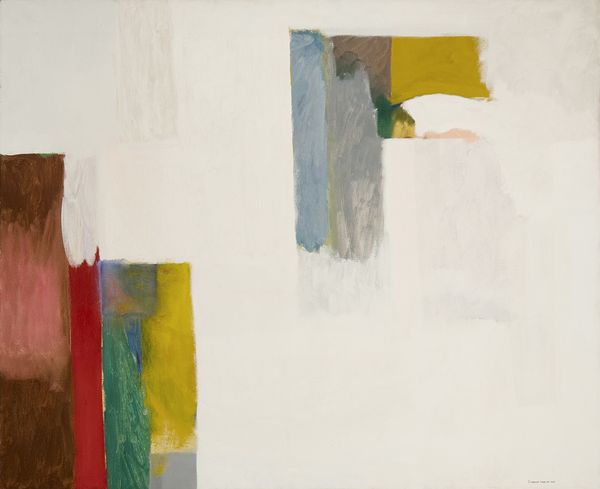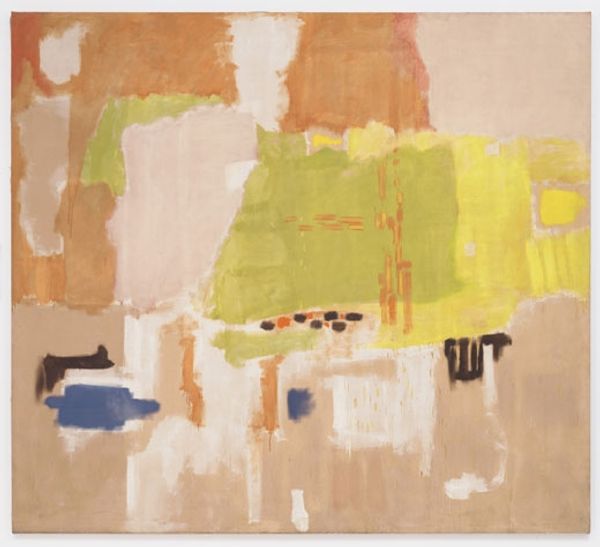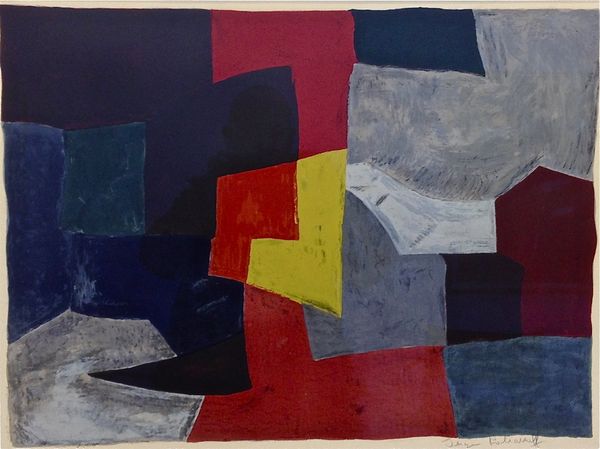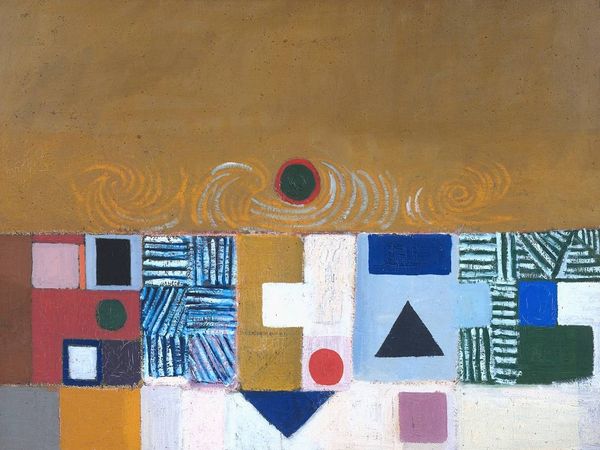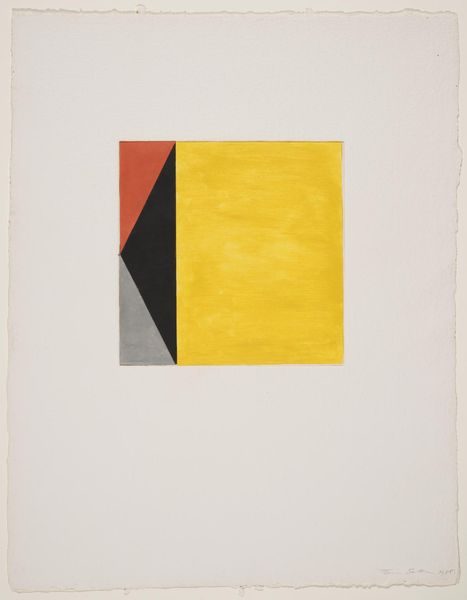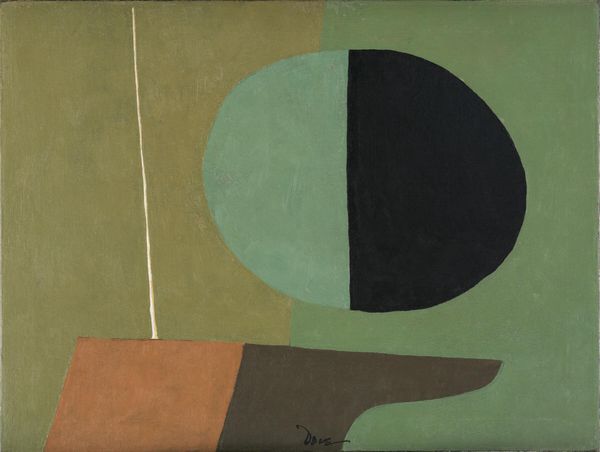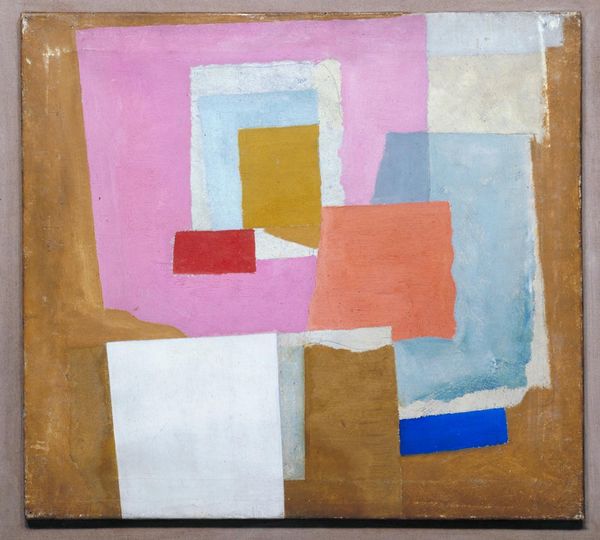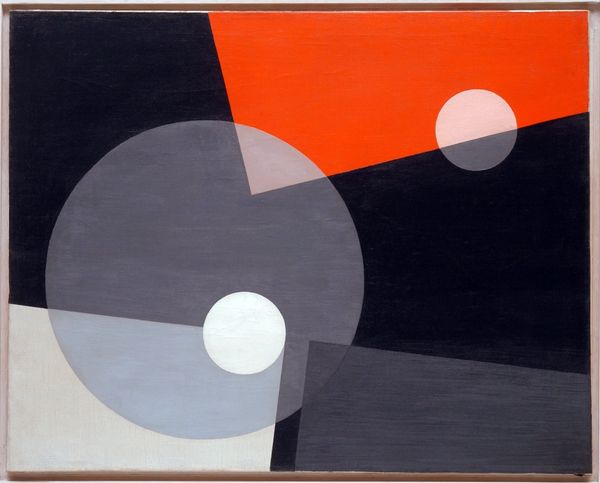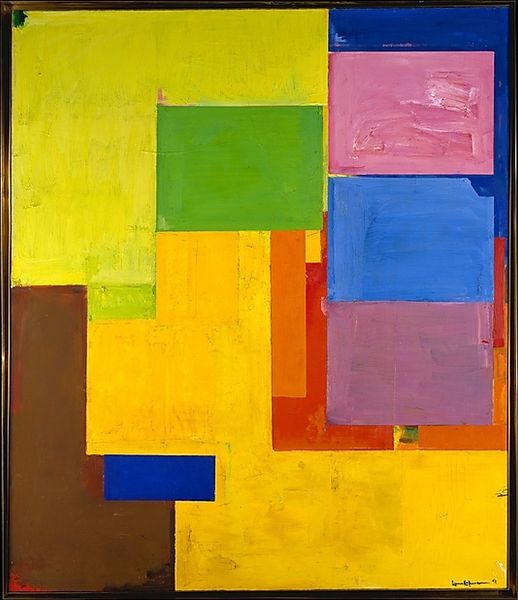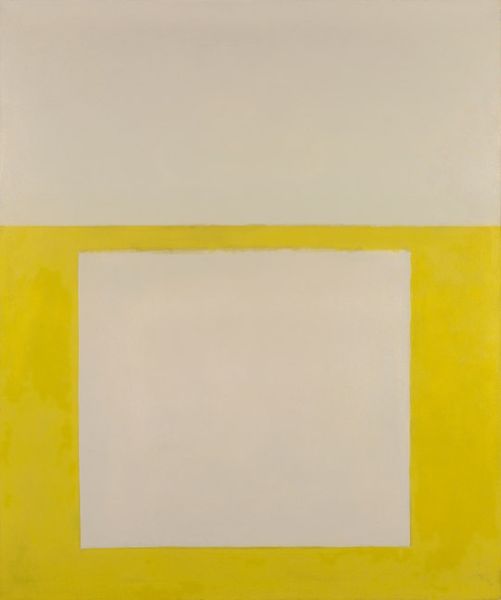
Dimensions: support: 762 x 889 mm frame: 831 x 960 x 89 mm
Copyright: © The Trustees of Winifred Nicholson | CC-BY-NC-ND 4.0 DEED, Photo: Tate
Editor: Here we have Winifred Nicholson's "Moonlight and Lamplight" from the Tate Collections. It's striking how she balances simple geometric forms. What symbols resonate with you in this work? Curator: The circle and the pentagon - one soft, receptive, the other assertive, directional. It evokes a duality. Do you think the artist is exploring a tension between the celestial and the terrestrial, the intuitive and the rational? Editor: I see the contrast now! It's like she's capturing two different ways of seeing the world. Curator: Precisely! And consider how light illuminates these forms. One might almost see an alchemical transformation, a synthesis of opposing forces. Editor: It definitely gives me a lot to consider about how we perceive light, shape and color. Curator: Indeed. Nicholson uses simple shapes to represent complex emotions and perceptions about the world.
Comments
tate 8 months ago
⋮
http://www.tate.org.uk/art/artworks/nicholson-moonlight-and-lamplight-t01996
Join the conversation
Join millions of artists and users on Artera today and experience the ultimate creative platform.
tate 8 months ago
⋮
Having embraced abstraction, Nicholson contended that ‘material resemblances were of no account - and that art could be valid without resemblances to physical objects’. Writing the year Moonlight and Lamplight was painted, Nicholson stated that she was ‘using colour to express colour - the form could take whatever form the colour wanted’. She was ‘never interested in form, or shape or volume or mass to express colour,’ but ‘studied the way the rainbow prisms break up white light into colour and ... the balance and pose of the weight of one colour against another’. Gallery label, April 2012
